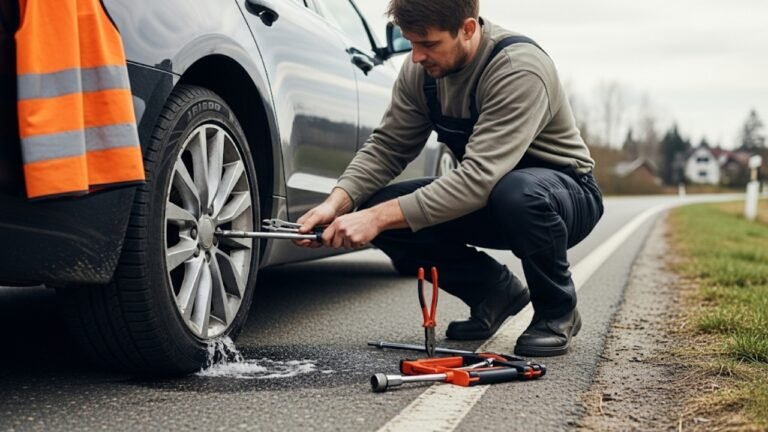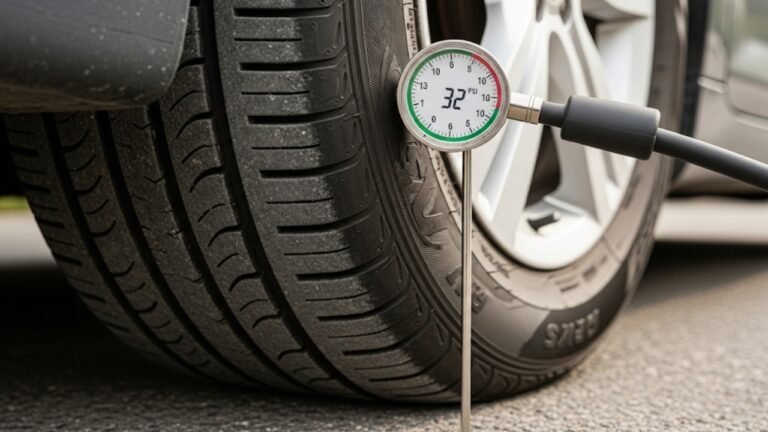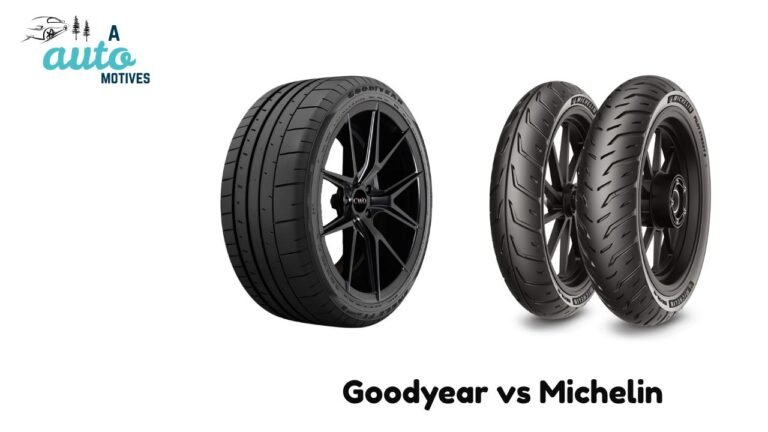How to Fix a Flat Tire: Guide to Puncture Repair Car Tire
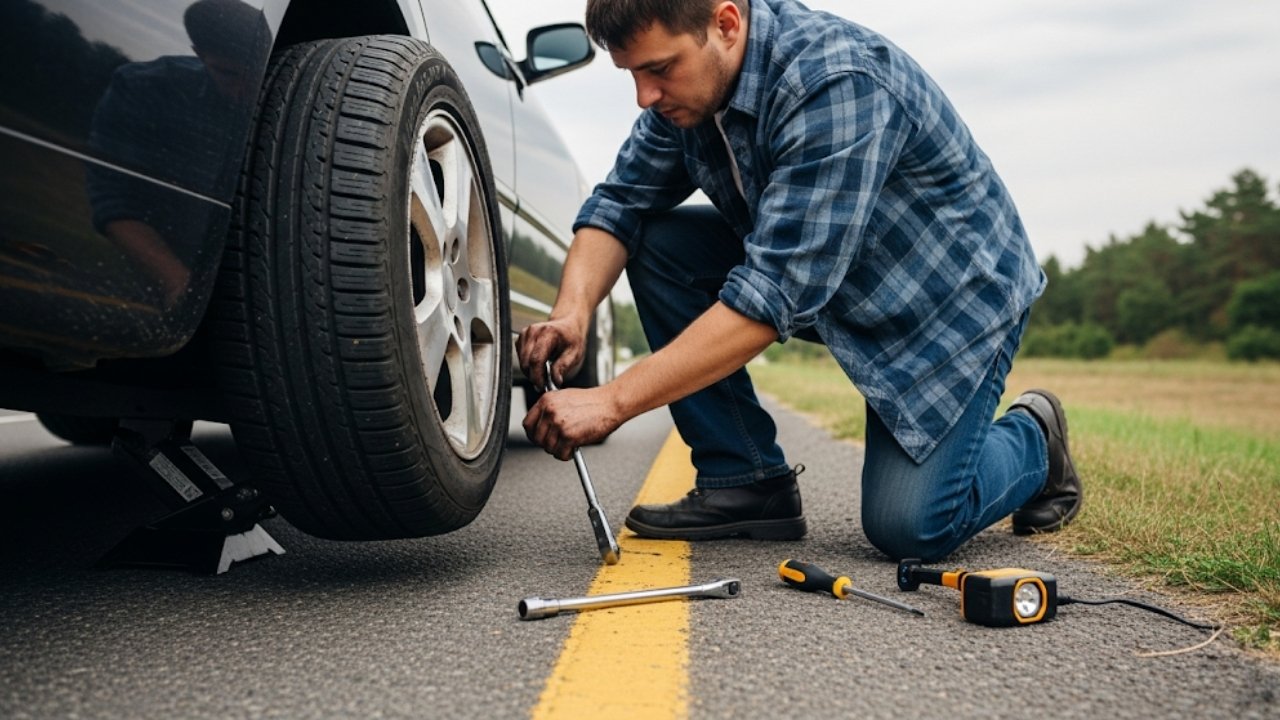
It usually starts with a slight wobble. Or maybe you hear that dreaded thump-thump-thump noise while driving. Then you glance at your dashboard, and there it is—a low tire pressure warning. Your heart sinks. Whether you’re on your way to work or the grocery store, nothing ruins the day faster than a flat. But here’s the good news: puncture repair car tire doesn’t have to be a mystery or an expensive job. It’s something almost anyone can handle, even if you’ve never touched a jack in your life.
Over the years, I’ve had my fair share of flats—some on lonely highways, others right outside my driveway. From learning the hard way to eventually fixing tires like a pro, I’ve gathered some wisdom I wish someone had shared with me. In this guide, I’ll walk you through everything you need to know, from spotting the puncture to actually repairing your car tire confidently.
Let’s dive in—with zero jargon and plenty of practical advice.
Why Car Tire Punctures Happen in the First Place
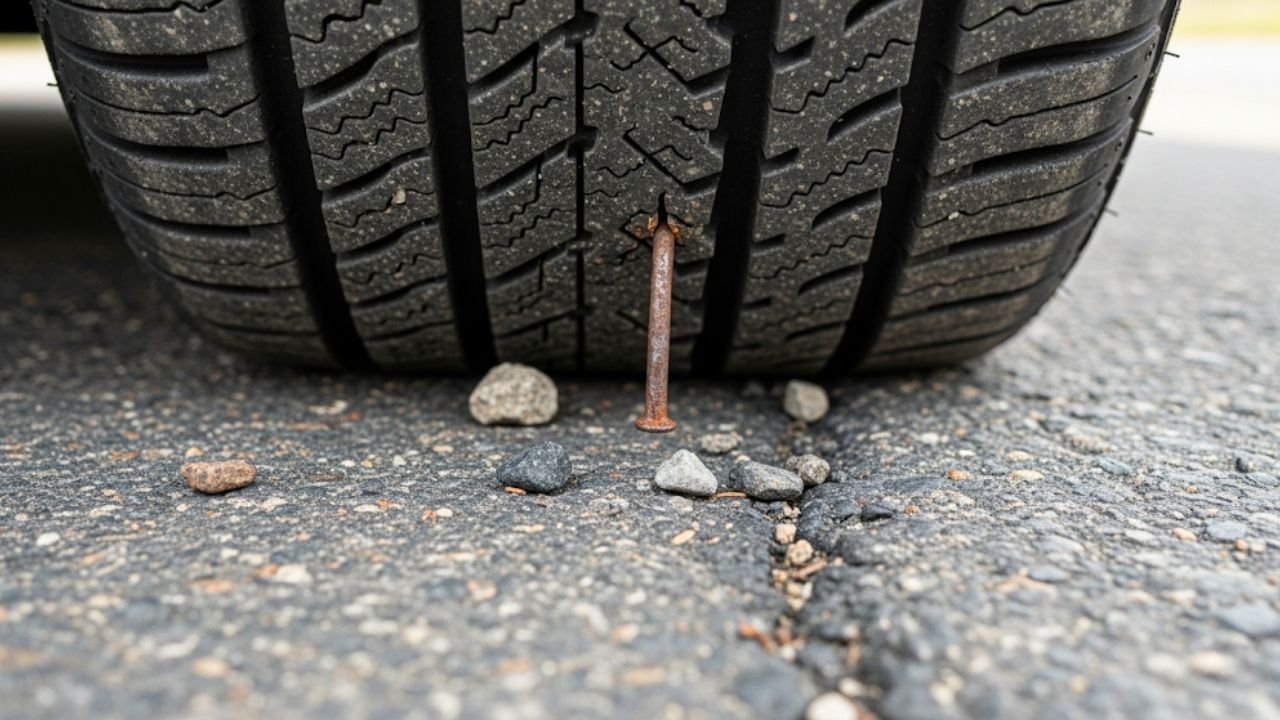
I remember driving through a construction zone one summer, not even thinking twice. The next morning? Completely flat tire. It turns out a tiny nail had embedded itself so cleanly that I didn’t notice until it was too late.
Here are a few common reasons your tire might get punctured:
-
Nails or screws from roads and parking lots
-
Sharp rocks or debris on uneven surfaces
-
Potholes—those tire destroyers we all fear
-
Valve stem leaks that develop over time
-
Worn-out tires with thin treads offering less protection
A lot of people assume you always need to replace the tire. But in many cases, a proper puncture repair car tire can extend its life for months—sometimes even years.
Spotting the Puncture: Early Signs You Shouldn’t Ignore
Sometimes your car will give you clear signs that something’s wrong. But other times, a slow leak can be sneaky. You might notice your steering feels “off” or that the car leans slightly to one side. Or maybe the TPMS (Tire Pressure Monitoring System) light keeps flashing on and off.
Here are a few tell-tale signs your car tire may be punctured:
-
A flat or underinflated tire, even after a recent fill-up
-
Strange vibrations in your steering wheel
-
Unusual sounds while driving
-
A visible nail or object lodged in the tread
-
A tire that won’t hold pressure for more than a few hours
If any of these pop up, it’s best not to ignore them. Driving on a damaged tire can cause more harm—both to your wallet and your safety.
Quick tip: Run your hands (carefully) around the tire tread. Sometimes you can feel a small metal tip or nail head sticking out. Don’t pull it out just yet. You’ll need to plug it first.
Types of Tire Punctures You Can (and Can’t) Repair
Let’s clear something up: not all punctures are repairable. But most minor ones are. That little nail in your tread? Totally fixable. A gash on the sidewall? Not so much.
There are three main types of tire punctures:
| Type | Repairable? | Details |
|---|---|---|
| Tread puncture (center) | ✅ Yes | Up to ¼ inch in diameter, usually fixable with a plug-patch combo |
| Sidewall damage | ❌ No | Sidewalls flex; repairs can’t safely hold |
| Shoulder puncture | ❌ Rarely | The curved area between tread and sidewall is risky to repair |
As a general rule, if the hole is small (less than 6mm) and in the middle area of the tread, a puncture repair car tire job is completely safe. It’s even backed by tire manufacturers when done properly.
Personal story: I once tried to repair a tire with a sidewall puncture just to save some money. A week later, I had a full blowout on the highway. Lesson learned—don’t take chances with sidewall damage.
DIY or Garage? Deciding How to Handle Tire Repairs
This is where it gets real. Should you fix it yourself or take it to a shop?
If you’re comfortable with tools and like saving money, doing it yourself can be surprisingly satisfying. A typical puncture repair car tire kit costs under $20 and takes just 15–20 minutes. But if you’re unsure or the damage is near the sidewall, it’s better to visit a tire shop.
Here’s a quick breakdown:
✅ DIY Tire Repair
-
Cheap and fast
-
Great for simple punctures in the tread
-
Useful during roadside emergencies
-
Learn a valuable life skill
❌ Go to a Garage
-
For deeper or side punctures
-
If you’re not confident with tools
-
If you don’t have a jack or air pump
-
Peace of mind with professional inspection
My go-to advice: Try it once under safe conditions, like in your garage or driveway. That way, when a flat happens on the road, you won’t panic.
Step-by-Step Guide: How to Perform a Puncture Repair on a Car Tire
Now, let’s get to the fun part. Here’s your simple, no-fuss guide to fixing a punctured tire on your own.
What You’ll Need:
-
Puncture repair kit (plug kit or patch + plug combo)
-
A pair of pliers
-
Tire pressure gauge
-
Air compressor or pump
-
Jack and wheel wrench
Steps to Follow:
-
Find the puncture
Inflate the tire and listen for a hissing sound. You can also apply soapy water and look for bubbles. -
Remove the object
Use pliers to pull out the nail, screw, or sharp object causing the leak. -
Ream the hole
Most repair kits come with a reaming tool. Twist it into the hole to clean and widen it slightly. -
Insert the plug
Slide the rubber plug through the insertion tool, push it into the hole, and yank it back quickly. Half the plug should remain visible. -
Trim excess plug
Cut off any part sticking out too far from the tire surface. -
Reinflate the tire
Use your air compressor to bring the tire back to the correct PSI. -
Check for leaks again
Apply soapy water once more to ensure no air escapes from the plug.
That’s it! You’ve just done a puncture repair car tire job like a champ.
How Long Will a Repaired Tire Last?
Here’s a question I get all the time: “Is this a permanent fix?” And honestly, it depends.
If done right—especially using a plug-patch combo—a puncture repair car tire can last just as long as the rest of your tire’s life. I’ve driven over 20,000 miles on a properly plugged tire without a single problem. But if you only use a simple plug, treat it as a temporary solution until you can get a patch applied at a shop.
Remember:
-
Always follow up a roadside plug with a permanent patch at a tire shop.
-
Regularly check tire pressure after a repair.
-
Never repair the same spot twice.
Post-Repair Care: Keeping Your Tires Healthy After a Puncture
So, you’ve patched your tire and it’s holding air. Nice work! But just like healing a wound, a bit of aftercare goes a long way. A puncture repair car tire isn’t a “fix and forget” deal—you’ll want to keep an eye on it, especially for the first few weeks.
Here’s what I recommend:
-
Check your tire pressure every few days after the repair. If it drops consistently, the repair might not be sealed perfectly.
-
Look at the plug or patch spot regularly. Is it bulging? Are there any new cracks forming nearby?
-
Rotate your tires regularly to avoid uneven wear. A repaired tire might behave slightly differently under pressure and heat.
-
Avoid high speeds or heavy loads during the first 100 miles post-repair. Let the fix settle in.
Honestly, I once ignored these steps and ended up on the shoulder of a rural highway in 40°C heat. Ever changed a tire in flip-flops? I don’t recommend it. Post-repair care is simple but crucial.
The Risks of Poorly Done Tire Repairs (And How to Avoid Them)
Not all repairs are created equal. Doing a puncture repair car tire incorrectly—or skipping steps—can lead to slow leaks, sudden flats, or worse… a blowout while you’re cruising at 110 km/h.
Here’s what can go wrong if the job isn’t done right:
-
Plug pops out because the hole wasn’t reamed properly
-
Moisture gets inside, rusting the steel belts of the tire
-
Plug wasn’t trimmed, so it catches on the road and pulls free
-
Multiple punctures too close together, weakening the tire’s integrity
A local mechanic once told me, “The most dangerous tires I see? DIY jobs done in a hurry.” So, if you’re going to do it yourself, take your time. Follow the instructions. And if you’re unsure—no shame in handing it over to a pro.
Pro tip: Use a combo patch-plug kit. It’s safer than a plug alone, and it gives the tire internal support where you can’t see.
Repair or Replace: What’s More Cost-Effective?
Let’s talk money—because nobody wants to throw cash down the drain. A puncture repair car tire costs way less than replacing the whole tire. But there’s a tipping point where replacing makes more sense.
Here’s a quick comparison table:
| Scenario | Repair Cost | Replace Cost | Best Option |
|---|---|---|---|
| Small nail in center tread | $15–$30 | $120–$200 | ✅ Repair |
| Sidewall damage | Not repairable | $120–$200 | ❌ Replace |
| Tread under 3/32 inch | Waste of repair | $120–$200 | ❌ Replace |
| 2+ punctures close together | Risky to repair | $120–$200 | ❌ Replace |
| Tire under 6 months old | Worth repairing | $120–$200 | ✅ Repair |
Unless the tire is old or the damage is near the side, a repair is usually the smarter choice. Plus, it’s more sustainable. Why junk a perfectly good tire when a $20 plug can give it a second life?
Be Road-Ready: Essentials for Your Tire Emergency Kit
If you’ve ever had a flat in the middle of nowhere, you know how helpless it feels. That’s why I always keep a car tire emergency kit in my trunk. It’s saved me more than once—and it can save you too.
Here’s what I recommend having:
-
Tire puncture repair kit (plug + patch + tools)
-
Portable air compressor (12V that plugs into your car)
-
Pressure gauge (digital or manual)
-
Flashlight or headlamp (trust me, it gets dark fast)
-
Gloves and hand wipes
-
Jack and lug wrench
-
Spare tire (make sure it’s inflated!)
I also throw in an old towel to kneel on and a small tarp if it’s raining. The idea is to make the situation as manageable—and clean—as possible. It’s like having a first-aid kit for your car tires.
Real-Life Moments: The Flat That Taught Me Everything
Let me share a quick story. A few years ago, I was driving home late from a wedding in a borrowed suit and shiny shoes. Suddenly, the car jolts. Flat tire. Dead in the middle of nowhere, 10:30 at night.
I had no idea what I was doing, and my phone signal was gone. I ended up sleeping in the car and getting rescued at dawn by a kind truck driver. That moment? It changed me. I vowed never to be that unprepared again.
Now, I can plug a tire in under 15 minutes—even in dress shoes. Life’s funny like that. Sometimes, the worst days give us the best skills.
FAQs About Puncture Repair Car Tire
1. Is a plug or patch better for a tire puncture?
A plug is quicker and easier, but a patch-plug combo is safer and more durable. Most professionals recommend using both.
2. How long does a repaired tire last?
If done properly, it can last the remaining life of the tire. I’ve driven tens of thousands of miles on a good repair.
3. Can I drive immediately after repairing my tire?
Yes, but take it slow at first. Avoid highways and high speeds for the first 50–100 km.
4. What happens if I drive with a punctured tire?
You risk more damage, including blowouts or damaging the rim. It’s unsafe and can be costly.
5. Can all tires be repaired?
No. Tires with damage on the sidewall, shoulder, or larger holes generally need replacement.
6. How many times can you repair the same tire?
Up to two times, if the punctures are far apart and properly sealed. But three or more is pushing your luck.
7. Is sealant (like Fix-a-Flat) a good solution?
It’s a temporary fix at best. It can help in emergencies but isn’t a substitute for a proper puncture repair car tire job.
8. Can I repair a tire in the rain or cold?
Yes, but it’s harder. Wet surfaces reduce adhesion, and cold can stiffen the rubber. Try to dry the area first and warm it slightly if possible.
Conclusion: Fixing Flats Like a Pro—No Sweat, No Stress
Flat tires aren’t fun, but they don’t have to ruin your day. With the right tools, a little patience, and some know-how, you can handle a puncture repair car tire like a seasoned mechanic. It’s empowering—like learning to cook your favorite meal or change a lightbulb.
You don’t need a garage. You don’t need expensive gear. Just a few basic tools, a little confidence, and the willingness to get your hands dirty.
And the next time you hear that slow hiss or see your tire warning light, you’ll smile. Because you’ve got this.

